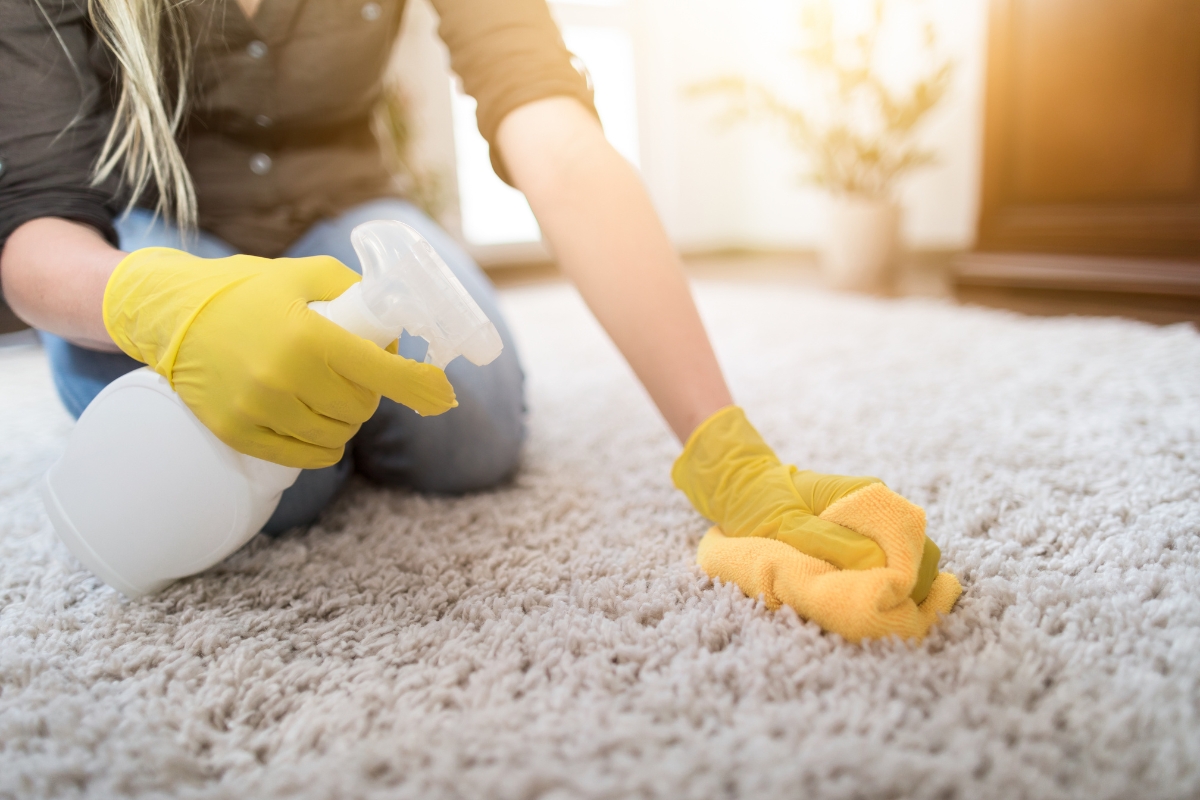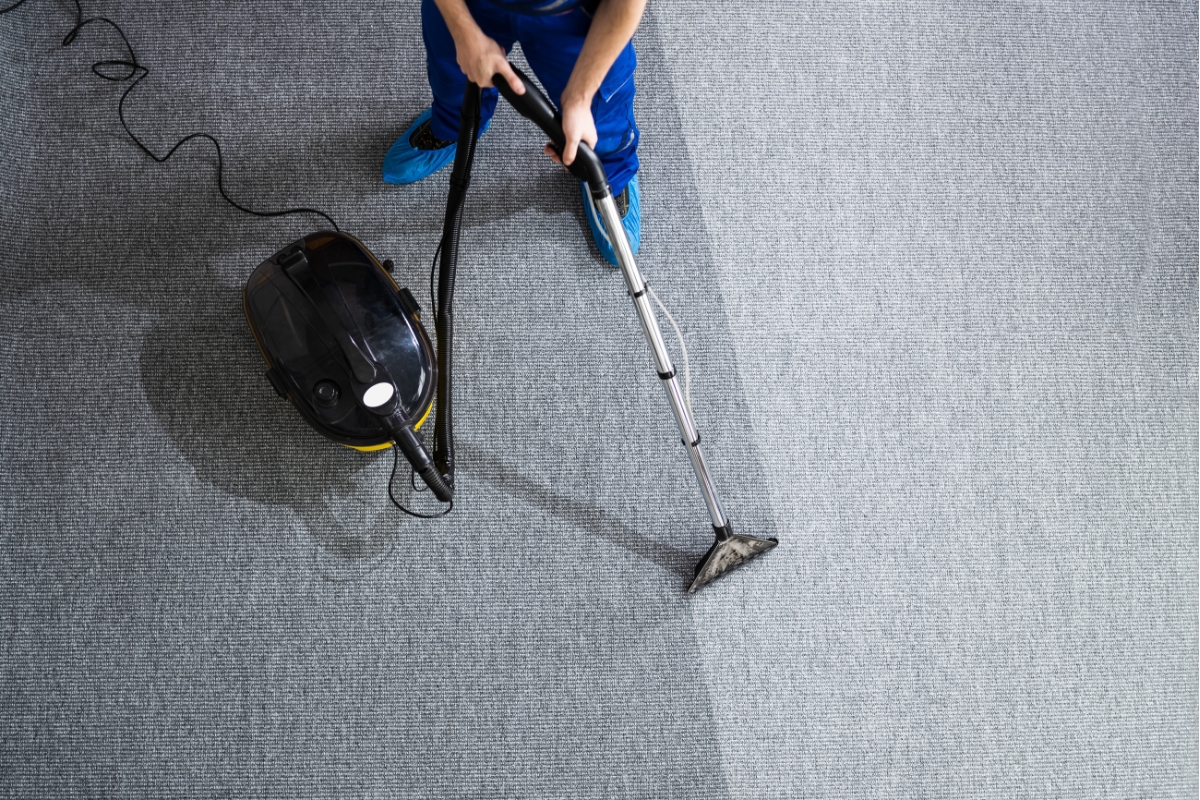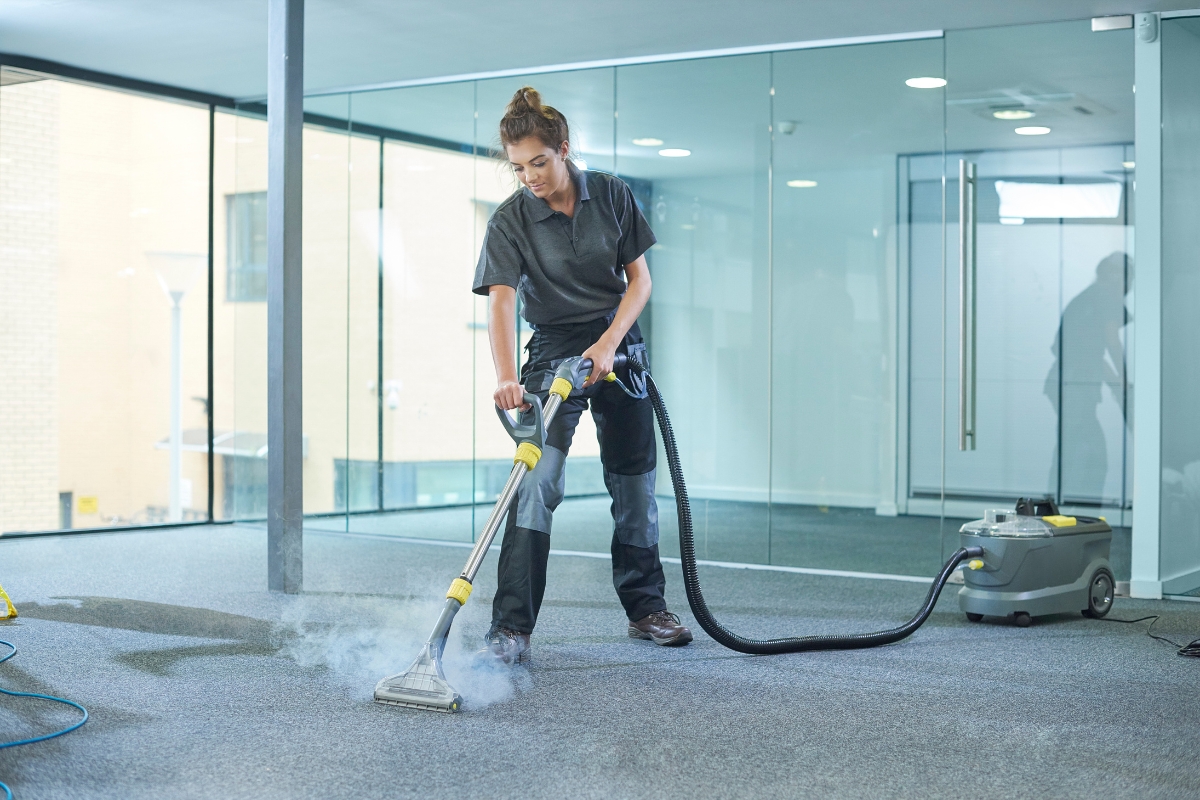How often do you clean your carpets?
We’re not just talking about vacuuming (although you should be doing it at least once or twice a week!), we’re talking about a deep carpet clean that will get all the imbedded dust and dirt out of it.
And if you regularly have guests and visitors that wear shoes indoors and walking on top of your carpet, everything that is on the ground outside – germs, dirt, soil, pollen, and more – is going to be transferred onto your carpet and ground into the carpet pile, making it tougher to remove.
In fact, according to Philip M. Tierno, PhD, a microbiologist and immunologist at New York University Langone Medical Center and the author of The Secret Life of Germs, about 200,000 bacteria, including E. coli, staphylococcus, and salmonella, live in each square inch of carpet. That’s 700 times more than the average household toilet!
And when it comes to spring, carpet cleaning is essential to help you manage pollens and allergens indoors to reduce spring allergy symptoms. Let Star PM walk you through the ins-and-outs of carpet cleaning to keep your property fresh, clean, and allergy free.
How Does Deep Carpet Cleaning Help With Allergy Relief?
You might be wondering, I vacuum all the time! How much can a deep clean really affect the cleanliness of your carpets?
A regular vacuum cleaner is sufficient in removing surface dirt, but miniscule allergens such as pollen, pet dander, and dust mites get trapped deep in the carpet fibres. Over time, these allergens accumulate, leading to worsening symptoms for allergy sufferers. Even the most powerful vacuum cleaner can’t reach the dust that gets trapped at the very base of your carpet.
That’s where a deep carpet clean steps in. The cleaning products can reach every centimetre of your carpet, eliminating the particles that vacuums can’t reach.
For a typical household, a deep clean every 6 to 12 months is recommended to maintain fresh and allergen-free carpets. However, if you have pets, children, or have high foot traffic, such as commercial properties or offices, consider carpet cleaning even more frequently to keep allergens under control.
Why Choose November For Your Carpet Clean
To be completely transparent, any time of year works for carpet cleaning. However, deep cleaning in spring offers unique benefits.
With November being peak allergy season with all the trees and flowers in full bloom, a deep carpet cleaning now can dramatically improve allergy relief for the whole household by clearing pollens and other allergens out of your carpet, helping you breath easier indoors.
Investing in carpet cleaning in November also has the added bonus of clearing any winter dirt and mud that got tracked into your property. It’s a win-win!

Taking Care of the Different Types of Carpet
As you may expect, different carpets need different care methods, especially when it comes to allergy relief. Check what type of carpet you have and find out what the best carpet cleaning practice is for you.
- Nylon and Synthetic Carpets: These types of carpets are durable and are commonly found in high-traffic areas of homes and commercial spaces due to their durability, affordability, and stain resistance. They trap allergens more easily than hard floors, so frequent cleaning is essential for allergy relief. Good news is, they are well-suited for frequent carpet cleaning, so schedule them in for that carpet clean without worry!
- Wool Carpets: Wool is naturally resistant to dirt but can be sensitive to water and chemicals. They are often found in areas where comfort, luxury, and warmth are prioritised due to their soft texture, natural resilience, and insulation properties. For wool carpets, choose a gentle carpet cleaning method to avoid damaging the fibres while achieving effective allergy relief.
- Blended Carpets: Blended carpets combine different materials and require a balanced cleaning approach. Typically made from a mix of natural fibres like wool and synthetic fibres such as nylon or polyester, they are popular in areas where durability, comfort, and budget considerations intersect. Avoid using hot water or harsh chemicals, which can affect the fibres and reduce allergy relief over time.
- Specialty Carpets: Delicate and heirloom carpets need special care for effective allergy relief. It is rare to find these in public settings, or in places that see moderate or high foot traffic. It is best to leave cleaning these carpets to professionals so that you don’t compromise the quality of the carpet.
Carpet Cleaning DIY: Step-by-Step Guide
Now that you know what type of carpet you have, and what sort of cleaning product is good for your carpet type, it’s time to get deep!
Step 1: Vacuum Thoroughly
Start by vacuuming every inch of the carpet, focusing on high-traffic areas where allergens accumulate. This step is essential for ensuring a thorough deep clean later on and helping you achieve allergy relief from your carpet cleaning.
Step 2: Spot Treat Stains
Step 3: Choose the Right Cleaning Method
Even for deep carpet cleaning, there are different methods to get your carpet as clean as you want it. Choose the right method that suits your carpet type, property type, and climate type. For example, if your property is prone to mould, a dry clean or steam clean may be more suitable than a shampoo.
- Dry Cleaning: Ideal for wool and blended carpets, dry cleaning uses minimal moisture, making it suitable for delicate fibres and humid areas. It’s perfect for commercial spaces or homes needing quick drying. The method applies a cleaning powder or foam, which is then vacuumed, removing surface and embedded dirt efficiently.
- Steam Cleaning (Hot Water Extraction): Best for synthetic and high-traffic carpets, steam cleaning injects hot water (and sometimes cleaning solution) into the carpet, removing deep-seated dirt and allergens. It’s highly effective for allergy relief, making it ideal for family homes and properties with pets or children. This will require some drying time afterward.
- Shampooing: Effective for synthetic carpets, shampooing cleans surface dirt through a scrubbing process. It suits homes with moderate traffic and small businesses. While it removes allergens and stains, some residue may remain, so thorough rinsing is essential. Not recommended for wool or delicate fibres due to potential residue. This method also takes the longest time to dry.
Step 4: Rinse and Dry
If you used a cleaning solution during your deep clean, it is essential to rinse out any remaining solution and allow the carpet to dry fully. This will prevent your carpet from attracting extra dirt after your hard work and prevent mould growth.
Two effective methods include:
- Using a wet/dry vacuum or carpet extractor with clean water, which thoroughly removes the solution and speeds up the drying process
- Manual rinsing by gently blotting with a damp, clean cloth, followed by a dry cloth to absorb moisture, which is recommended for smaller or more delicate areas.
Both will help you effective dry your carpet faster and avoid mildew.
Step 5: Air Out the Room

Keep Your Carpets Cleaner for Longer
Regular maintenance between deep carpet cleaning sessions is crucial for keeping your carpets fresher for longer. Here’s how to keep your carpets clean and allergen-free:
- Vacuum Regularly: Vacuuming high-traffic areas at least twice a week helps to keep surface allergens at bay. For more effective vacuuming, invest in a vacuum with an HEPA filter, empty the vacuum once it gets two-thirds full, and wash the vacuum filter every 6 months.
- Spot Clean Immediately: Address spills and stains right away to prevent allergens from settling in.
- Use Entry Mats: Placing mats at doorways reduces the amount of dirt and pollen that reaches your carpets.
- Go Shoeless Indoors: Shoes bring in dirt, pollen, and other allergens, so if possible, encourage a visitors to remove their shoes to keep carpets cleaner for longer.
For allergy sufferers, carpet cleaning every 6-12 months can provide substantial relief. A November clean will set you up for a fresh, allergen-reduced start to summer.

